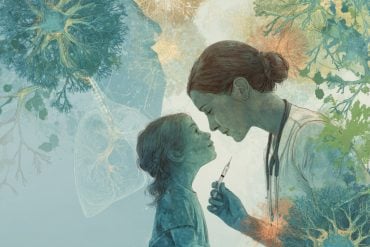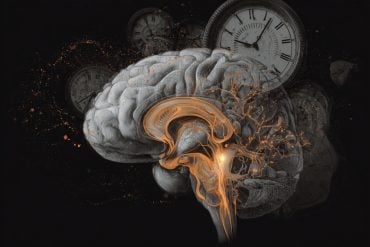Summary: New autism theory is consistent with the current science on the genetics of the disorder but shifts the focus to the positive traits of ASD and historical events that altered the prevalence of autism in society.
Source: Vanderbilt University
A unifying explanation of the cause of autism and the reason for its rising prevalence has eluded scientists for decades, but a theoretical model published in the journal Medical Hypotheses describes the cause as a combination of socially valued traits, common in autism, and any number of co-occurring disabilities.
T.A. Meridian McDonald, PhD, a research instructor in Neurology at Vanderbilt University Medical Center, has spent 25 years researching autism, from a time she could read literally every research paper on the topic in the 1990s until now, when there is an overload of such studies.
“Up until now there have been a lot of theories about the possible causes of autism but none of those theories account for the majority of autism cases,” McDonald said. “There are also a lot of theories as to why the prevalence of autism has been increasing in the population but, to date, there hasn’t been a theory that provides an explanatory model that accounts for all of those phenomena, including the genetics, social history, or characteristics of autism.”
The CDC estimates that 1-in-54 persons are on the autism spectrum.
Consistent with Genetics Research in Autism
McDonald’s theory, titled ‘The Broader Autism Phenotype Constellation-Disability Matrix Paradigm (BAPCO-DMAP) Theory,’ is consistent with the current science on the genetics of autism but shifts the focus to positive traits of autism and to historical events that changed the prevalence of autism in society.
“The BAPCO-DMAP theory describes how people are attracted to other people who are very similar. They are attracted to certain traits that are very common in the population, and this leads to offspring who are more likely to have certain traits, as well as a greater intensity of traits.” McDonald said.
“The (BAPCO) traits are not what people expect. They expect the traits to be about challenges or difficulties, but instead there are six main traits — increased attention, increased memory, a preference for the object world vs. the social world and their environment, increased nonconformity, increased differences in sensory and perception, as well as systemizing.”
BAPCO Can Interact with Development
BAPCO traits alone are not necessarily disabling. A person can have BAPCO traits and still have excellent communication and socialization skills, but too much of any of these traits can affect development.
For example, although it seems counterintuitive, McDonald outlines how increased memory and attention can delay language development in children with BAPCO traits.
“Typical babies have tiny attention spans and working memory. These limitations on memory and attention actually help babies learn their first language by breaking the words into their tiniest parts,” she said.
“But an infant with very high levels of attention and memory has a harder time with learning language because they are unable to break the language down to very small parts, so they learn groups of sounds instead.”
McDonald describes how increased memory and attention can lead to echolalia, where children speak in, or repeat, long phrases without seeming to understand them.
“You can often see children with autism engaging in sense-making activities, such as watching the same show over and over and memorizing information,” she said.
BAPCO Can Interact with Disabilities
BAPCO traits can also interact with disabilities. If a person has BAPCO traits and they also have a disability such as Down syndrome or information processing disorder, then those things combined can create greater challenges than what would be experienced by an individual who has only a BAPCO personality or a disability, but not both.
Increased Prevalence of BAPCO and Autism
McDonald’s theory also highlights how the prevalence of autism has increased in higher income countries due to societal changes that increase freedoms in education, employment and other opportunities for both men and women.
In societies where people do not have freedom to pursue their interests and passions, where meritorious education is not valued, where men and women do not have freedom to choose their careers, and where nonconformity is not tolerated, McDonald predicts the frequency of BAPCO traits in these populations will be very low.

“The frequency and intensity of BAPCO traits in the U.S. have increased, for example, because individuals are more likely to meet and have children with other individuals with similar education, occupations and interests than would have been possible 100 years ago,” she said.
“When men and women with BAPCO traits have children it can increase both the frequency and intensity of BAPCO traits in the population.”
No Cure for Autism
McDonald said she now knows what causes autism but it is not something that could be cured and, honestly, she wouldn’t want to do that.
“What we call ‘autism’ is the BAPCO personality combined with a disability or very intense BAPCO traits,” she said. “Because the BAPCO is made of socially valued traits, it is not possible to cure autism. Instead, we need to focus on the full range of disabilities that affect people with and without the BAPCO personality.”
McDonald said future research should focus on the causes and treatment of underlying disabilities and also on providing supports such as interventions for individuals with disabilities, including those who have this combination of BAPCO and disability intersection.
“When we talk about autism we need to address the developmental disabilities that these individuals are experiencing but also find way to support and enhance their broader autism trait constellations,” she said.
About this autism research news
Source: Vanderbilt University
Contact: Craig Boerner – Vanderbilt University
Image: The image is in the public domain
Original Research: Closed access.
“The broader autism phenotype constellations–disability matrix paradigm: Theoretical model for autism and the broader autism phenotype” by T.A. Meridian McDonald. Medical Hypotheses
Abstract
The broader autism phenotype constellations–disability matrix paradigm: Theoretical model for autism and the broader autism phenotype
The prevalence of autism has increased dramatically over the last 60 years, and the cause of this increase is unclear. In this paradigm-shift paper, I propose an explanatory paradigm for the cause of autism and its increased prevalence in the general population. I also discuss how social and historical contexts may have influenced the evolution and manifestation of specific traits in the autism population. These traits expand the characterization of the broader autism phenotype to include a constellation of socially valued traits, termed Broader Autism Phenotype Constellations (BAPCO). The frequency of these traits may have increased due to assortative mating opportunities that occurred alongside social changes in education and occupational opportunities over the last 100 years. I propose that assortative mating can lead to both positive and negative developmental consequences affecting social and language development. I also propose that BAPCO traits, which are not intrinsically disabilities, could interact with co-occurring conditions in a new model called the BAPCO-Disability Matrix Paradigm (BAPCO-DMAP). In this paradigm, autism is located at the intersection of BAPCO traits and at least one co-occurring condition. These proposed models support the need to create a more comprehensive definition of autism that includes constellations of BAPCO traits. The BAPCO-DMAP paves the way to testable predictions of autism prevalence and provides a framework to better understand the foundational traits of autism. Finally, this paradigm radically redefines the broader autism phenotype with characteristics that can inform therapy and child development.







